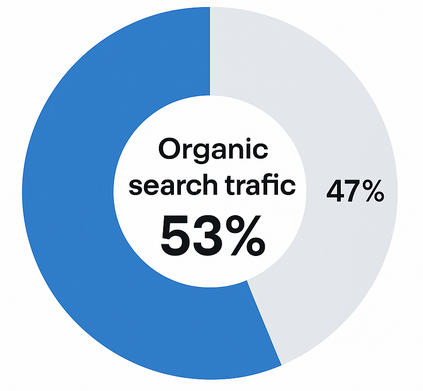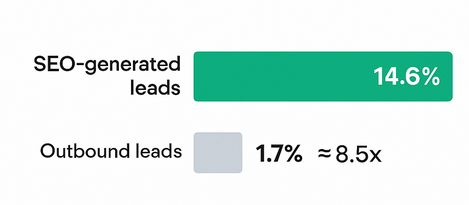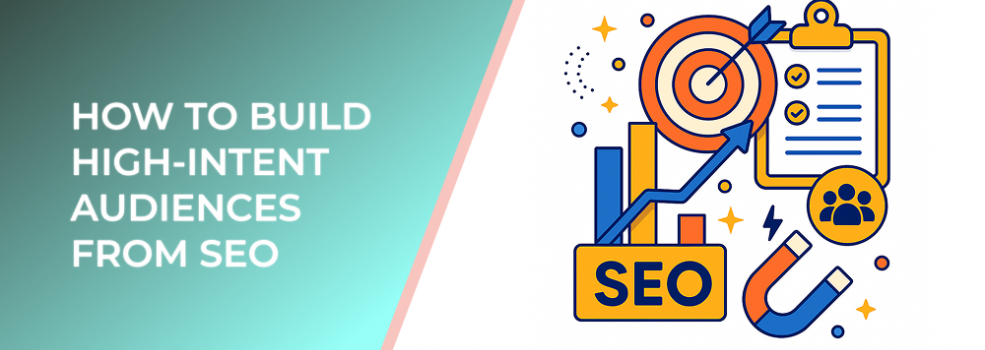Building high-intent audiences from SEO is one of the most efficient ways to improve targeting performance. Users who arrive through organic search already express clear intent. By capturing their behavior and categorizing it into actionable segments, you can turn SEO traffic into a continuous source of qualified prospects.
Why SEO Traffic Holds High Intent

Organic search now drives over half of website visits
Organic traffic often comes from users actively searching for solutions. Industry studies show that organic search accounts for about 53% of all trackable website traffic, and visitors from SEO convert at a rate up to 1.5x higher than from social channels. This intent makes SEO visitors particularly valuable for building precise audience groups.
Step 1: Identify High-Intent Keywords
Focus on keywords where users signal readiness to act:
-
Comparisons ("best tools for...", "top solutions for...")
-
Problem-based queries ("how to fix...", "how to improve...")
-
Pricing and decision queries ("tool pricing", "how much does...")
Data shows that users who search for bottom-of-funnel keywords convert up to 70% more than those landing from general informational queries.
Step 2: Track User Behavior and Define Intent Signals
Intent signals from SEO visitors help qualify them for segmented audiences. Common signals include:
-
Multiple page visits within one session
-
Time on page above average
-
Visits to pricing, comparison or case study pages
-
Product-related keyword landing pages
According to recent research, visitors who view two or more high-intent pages are 2.3x more likely to complete a conversion.
Step 3: Use First-Party Data Collection
To build audiences that retain value across campaigns, focus on capturing first-party data such as:
-
Email forms
-
Quiz or assessment responses
-
Account sign-ups
-
On-site engagement data
Companies using structured first-party data strategies see up to a 29% increase in campaign efficiency due to improved matching and segmentation.
Step 4: Segment SEO Audiences Based on Intent
Create segments such as:
-
Visitors from high-intent keyword pages
-
Users who visited pricing or comparison pages
-
Returning organic visitors
-
Readers who interacted with product-focused content
These segments become useful for remarketing and for building lookalike models.
Step 5: Activate These Audiences in Paid Campaigns
Once you have structured first-party audiences from SEO traffic, integrate them into paid channels. High-intent segments typically show:
-
Higher conversion rates
-
Lower cost per acquisition
-
Faster optimization cycles

SEO-derived leads convert far more effectively than outbound leads
A study of performance marketers revealed that campaigns using SEO-derived audiences can reduce acquisition costs by up to 25% thanks to pre-qualified intent.
Step 6: Test and Optimize Continuously
Monitor how different SEO-created audiences perform across campaign objectives. Over time, refine audience rules by:
-
Adding new intent signals
-
Prioritizing landing pages that correlate with conversions
-
Identifying content that attracts users with the highest purchase probability
Conclusion
SEO is more than a traffic channel. It is a consistent source of high-intent data that, when collected and activated correctly, can significantly improve audience quality and campaign performance. High-intent SEO visitors are closer to making decisions and can be transformed into reliable segments for scalable paid campaigns.

